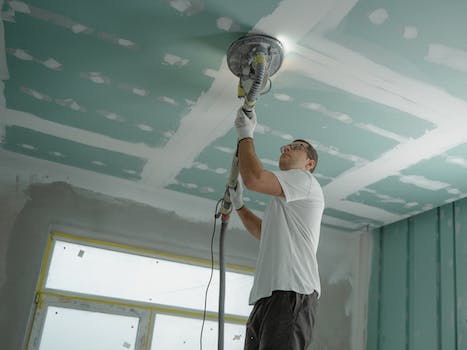How To Build A House
“From foundation to roof, a step-by-step guide to building your dream home.”
Introduction
Building a house is a complex and exciting process that requires careful planning and execution. From selecting a suitable location to designing the layout and choosing the right materials, there are many factors to consider when building a house. In this guide, we will provide an overview of the key steps involved in building a house, including site preparation, foundation construction, framing, roofing, electrical and plumbing installation, and finishing touches. Whether you are a first-time home builder or an experienced contractor, this guide will help you navigate the process and create a beautiful and functional home.
Choosing the Right Location for Your House
Building a house is a dream come true for many people. It is a significant investment that requires careful planning and consideration. One of the most crucial decisions you will make when building a house is choosing the right location. The location of your house will determine its value, accessibility, and overall livability. In this article, we will discuss how to choose the right location for your house.
The first step in choosing the right location for your house is to consider your lifestyle. Do you prefer a quiet, rural setting, or do you want to be close to the city’s hustle and bustle? Do you have children who need to attend school, or are you retired and looking for a peaceful place to relax? These are essential questions to ask yourself before choosing a location.
Once you have determined your lifestyle needs, you should consider the neighborhood’s safety and security. You want to choose a location that is safe and secure for you and your family. Research crime rates in the area and talk to local law enforcement to get a better understanding of the neighborhood’s safety.
Another important factor to consider when choosing a location is accessibility. You want to choose a location that is easily accessible to your workplace, schools, and other essential amenities. Consider the distance you will need to travel to get to these places and the transportation options available.
The natural environment is also an essential factor to consider when choosing a location. You want to choose a location that is in a beautiful and serene environment. Consider the climate, topography, and natural features of the area. If you love the outdoors, you may want to choose a location that is close to parks, lakes, or hiking trails.
The availability of utilities and infrastructure is another crucial factor to consider when choosing a location. You want to choose a location that has access to essential utilities such as water, electricity, and gas. You also want to choose a location that has good infrastructure, including roads, bridges, and public transportation.
Finally, you should consider the cost of living in the area. The cost of living can vary significantly depending on the location. You want to choose a location that is affordable and within your budget. Consider the cost of housing, taxes, and other essential expenses when choosing a location.
In conclusion, choosing the right location for your house is a crucial decision that requires careful consideration. You want to choose a location that meets your lifestyle needs, is safe and secure, accessible, in a beautiful environment, has access to essential utilities and infrastructure, and is affordable. By considering these factors, you can choose the right location for your house and enjoy a comfortable and fulfilling life.
Creating a Blueprint and Designing Your House

Building a house is a dream for many people. It is a significant investment, and it requires careful planning and execution. One of the first steps in building a house is creating a blueprint and designing your house. This step is crucial because it sets the foundation for the entire building process. In this article, we will discuss how to create a blueprint and design your house.
The first step in creating a blueprint is to hire an architect or a designer. These professionals have the expertise and experience to create a blueprint that meets your needs and preferences. They will work with you to understand your vision for your house and create a design that reflects your style and personality.
Once you have hired an architect or a designer, the next step is to discuss your requirements and preferences. You should be clear about the number of rooms you want, the size of each room, the layout of the house, and any other specific features you want in your house. The architect or designer will take all these factors into consideration and create a design that meets your needs.
After the initial discussion, the architect or designer will create a preliminary design. This design will include the floor plan, elevations, and sections of the house. You will have the opportunity to review the design and provide feedback. If you are not satisfied with the design, you can ask the architect or designer to make changes.
Once you are happy with the preliminary design, the architect or designer will create a final design. This design will include all the details of the house, including the materials to be used, the dimensions of each room, and the placement of windows and doors. The final design will also include the electrical and plumbing plans.
After the final design is complete, the architect or designer will create a blueprint. The blueprint is a detailed plan of the house, including all the dimensions, materials, and specifications. The blueprint is used by the builder to construct the house.
When designing your house, it is important to consider the functionality of each room. For example, the kitchen should be designed to be functional and efficient. It should be easy to move around and have enough storage space. The bedrooms should be designed to be comfortable and relaxing. They should have enough space for a bed, wardrobe, and other furniture.
Another important factor to consider when designing your house is the orientation of the house. The orientation of the house can affect the amount of natural light and ventilation in the house. It can also affect the energy efficiency of the house. For example, a house that faces south will receive more sunlight, which can help reduce heating costs in the winter.
In conclusion, creating a blueprint and designing your house is an important step in building a house. It sets the foundation for the entire building process and ensures that your house meets your needs and preferences. When designing your house, it is important to consider the functionality of each room and the orientation of the house. By working with an architect or designer, you can create a design that reflects your style and personality and meets your needs.
Building the Foundation and Framing the House
Building a house is a dream for many people. It is a significant investment, and it requires careful planning and execution. In this article, we will discuss the first two steps in building a house: building the foundation and framing the house.
Building the Foundation
The foundation is the most critical part of a house. It is the base on which the entire structure rests. A strong foundation ensures the stability and durability of the house. The first step in building a foundation is to excavate the site. The excavation should be deep enough to accommodate the foundation and any necessary drainage systems.
Once the excavation is complete, the next step is to pour the concrete. The concrete should be of high quality and should be mixed according to the specifications of the engineer. The concrete should be poured in one go to ensure that it sets uniformly. The concrete should be allowed to cure for at least a week before any further work is done.
After the concrete has cured, the next step is to waterproof the foundation. This is done by applying a waterproofing membrane to the exterior of the foundation. The membrane should be applied in two layers to ensure maximum protection against water damage.
Framing the House
Framing is the process of building the skeleton of the house. It involves constructing the walls, floors, and roof. The framing is done using wood or steel studs. The first step in framing is to lay out the walls on the foundation. This is done using a chalk line and a level.
Once the walls are laid out, the next step is to construct the wall frames. The frames are built using wood or steel studs. The studs are spaced at regular intervals and are secured to the foundation using anchor bolts. The frames are then raised into position and secured to each other using nails or screws.
After the wall frames are in place, the next step is to construct the floor and roof frames. The floor frames are built using joists, while the roof frames are built using rafters. The frames are secured to the wall frames using metal connectors.
Once the frames are in place, the next step is to install the sheathing. The sheathing is a layer of plywood or OSB that is attached to the exterior of the frames. The sheathing provides a flat surface for the siding and roofing materials to be attached to.
Conclusion
Building a house is a complex process that requires careful planning and execution. Building the foundation and framing the house are the first two steps in the process. A strong foundation and a well-built frame are essential for the stability and durability of the house. By following the steps outlined in this article, you can ensure that your house is built to last.
Installing Electrical, Plumbing, and HVAC Systems
Building a house is a complex process that requires careful planning and execution. One of the most important aspects of building a house is installing the electrical, plumbing, and HVAC systems. These systems are essential for the comfort and safety of the occupants of the house. In this article, we will discuss how to install these systems in your new home.
Electrical System
The electrical system is one of the most important systems in a house. It provides power to all the appliances and devices in the house. The first step in installing the electrical system is to hire a licensed electrician. The electrician will work with the builder to determine the electrical needs of the house. This includes the number of outlets, switches, and light fixtures that will be installed.
Once the electrical plan is finalized, the electrician will begin installing the wiring and electrical boxes. The wiring will be run through the walls and ceilings of the house. The electrician will also install the electrical panel, which is the central hub for the electrical system. The panel contains circuit breakers that protect the electrical system from overloading.
Plumbing System
The plumbing system is another important system in a house. It provides water to the house and removes waste water. The first step in installing the plumbing system is to hire a licensed plumber. The plumber will work with the builder to determine the plumbing needs of the house. This includes the number of bathrooms, sinks, and other fixtures that will be installed.
Once the plumbing plan is finalized, the plumber will begin installing the pipes and fixtures. The pipes will be run through the walls and floors of the house. The plumber will also install the water heater, which provides hot water to the house. The water heater can be powered by gas or electricity.
HVAC System
The HVAC system is responsible for heating and cooling the house. It includes a furnace, air conditioner, and ductwork. The first step in installing the HVAC system is to hire a licensed HVAC contractor. The contractor will work with the builder to determine the heating and cooling needs of the house.
Once the HVAC plan is finalized, the contractor will begin installing the furnace, air conditioner, and ductwork. The furnace and air conditioner will be installed in the basement or attic of the house. The ductwork will be run through the walls and ceilings of the house. The HVAC system can be powered by gas or electricity.
Conclusion
Installing the electrical, plumbing, and HVAC systems is a crucial part of building a house. It requires the expertise of licensed professionals to ensure that the systems are installed correctly and safely. By following the steps outlined in this article, you can ensure that your new home has a reliable and efficient electrical, plumbing, and HVAC system.
Finishing the Interior and Exterior of Your House
Building a house is a complex process that requires careful planning and execution. Once the foundation, framing, and roofing are complete, it’s time to focus on finishing the interior and exterior of your house. This is where you can really start to see your vision come to life. In this article, we’ll discuss some tips and tricks for finishing the interior and exterior of your house.
Let’s start with the exterior. The first thing you’ll want to do is choose a color scheme for your house. This will help you decide on the color of your siding, trim, and front door. You’ll also want to consider the type of siding you want to use. There are many options available, including vinyl, wood, and fiber cement. Each has its own advantages and disadvantages, so do your research before making a decision.
Once you’ve chosen your siding, it’s time to install it. This is a job best left to professionals, as it requires specialized tools and knowledge. Make sure you hire a reputable contractor who has experience with the type of siding you’ve chosen.
Next, you’ll want to focus on landscaping. This includes planting trees, shrubs, and flowers, as well as installing a lawn and irrigation system. Landscaping can be a big job, so consider hiring a professional landscaper to help you design and install your outdoor space.
Moving on to the interior, the first thing you’ll want to do is install insulation. This will help keep your house warm in the winter and cool in the summer, as well as reduce noise from outside. There are many types of insulation available, including fiberglass, cellulose, and spray foam. Again, do your research to determine which type is best for your needs.
Once the insulation is installed, it’s time to focus on the walls. You’ll want to choose a paint color that complements your furniture and decor. Consider using an accent wall to add interest and depth to your space. You’ll also want to install baseboards and crown molding to give your rooms a finished look.
Next, it’s time to install flooring. There are many options available, including hardwood, tile, and carpet. Each has its own advantages and disadvantages, so consider your lifestyle and budget when making a decision. You’ll also want to install window treatments, such as blinds or curtains, to add privacy and style to your space.
Finally, it’s time to focus on the finishing touches. This includes installing light fixtures, hanging artwork, and adding decorative accessories. Consider using a mix of textures and materials to add interest and depth to your space. Don’t be afraid to mix and match styles to create a unique look that reflects your personality and taste.
In conclusion, finishing the interior and exterior of your house is an exciting and rewarding process. With careful planning and execution, you can create a space that is both functional and beautiful. Remember to do your research, hire professionals when necessary, and have fun with the process. Happy building!
Conclusion
To build a house, one must first acquire the necessary permits and land. Then, a design must be created and a contractor hired. The foundation is laid, followed by framing, electrical and plumbing work, insulation, and drywall. Finally, flooring, cabinets, and fixtures are installed. Building a house requires careful planning and attention to detail, but the end result can be a beautiful and functional home.






